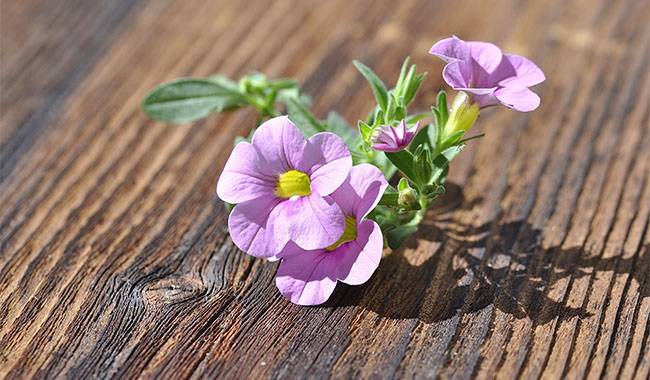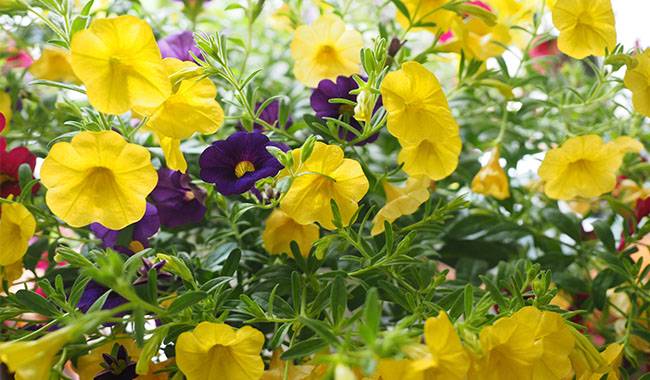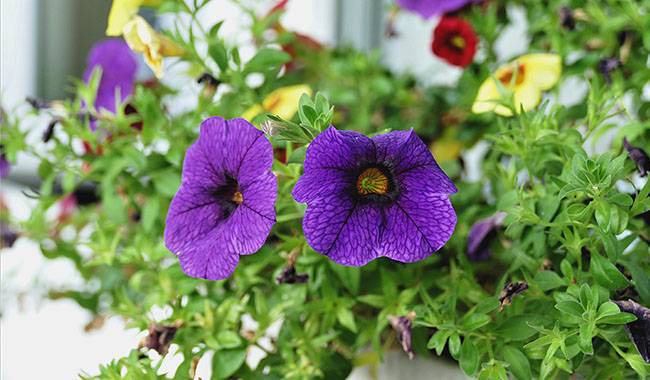
Calibrachoa, a flower that adorns many balconies and terraces, impresses with its lush, cascading beauty. Not long ago, this plant, densely studded with bright little bells, was thought by many florists to be a petunia.
You can also find this name in floriculture books under Calibrachoa, which was not included in the genus Petunia until 1990. Later, chromosomal differences between these cultivars regarding DNA structure were discovered by plant scientists.
Based on these studies, it was proven that Calibrachoa and petunia are related plants, but at the same time completely different. Beginners will find it useful to understand how they can properly care for Calibrachoa.
How to take care of calibrachoa?
When growing Calibrachoa, it is important to take full and proper care of the flowers. Their comfortable development and luxuriant flowering directly depend on the timely implementation of such agronomic measures.
- Watering.
- Pruning.
- Fertilization.
Attention!
Many gardeners note that it is much easier to care for Calibrachoa than petunias. In addition, the extended flowering period of the plant is a definite advantage. A lush bush pleases throughout the summer and does not lose its natural beauty even in the rain.
Watering and nutrition
Calibrachoa responds well to care events such as sprays. Therefore it is recommended to water the flowers daily. Regular watering is also needed, but at the same time in moderation. Water the roots of the plant once or twice a week.
In summer, in very hot summers, the plants should be watered more often, but in smaller portions. The soil should be kept moist, but not too wet, as this can lead to root rot.
TIP!
In hot summer cultivation, spray Calibrachoa shrubs regularly. This should be done as often as possible, 2 to 4 times a day. It is important not to expose the shrubs to direct sunlight.
It is difficult to imagine comprehensive care without fertilization. This should be done with mineral and organic fertilizers, alternating every 7 days. Fertilizing Calibrachoa with manure is not recommended because it can trigger fungal diseases that affect the root system.
Fertilization can be done through the foliage and under the roots. If the plant is stunted, you can apply a stimulating solution. Nitrogen fertilizers promote the growth of stems and phosphorus and potassium fertilizers stimulate the formation of buds.
This beautiful flower is easy to care for and can be cared for by novice growers.
- Calibrachoa is a water-loving plant that does not tolerate drought. The soil in the vase or cachepot should always be kept slightly moist. It is worth remembering that excessive moisture can be destructive to the flower as it can lead to root rot. Also, Calibrachoa likes to be sprayed with water and can be scheduled for him several times a day.
- The plant likes a lot of light. Calibrachoa will not bloom if it is placed in the shade. The best place to place the pot or kaiju – the balcony, the southern or eastern part of the balcony. The hot sun should not fall on the flowers at midday. It is recommended to place the flowers away from draughts and strong gusts of wind, so as not to break the shoots.
- Since flowers are watered fairly frequently, all the nutrients are quickly washed out of the soil and need to be replenished regularly. You can do this by feeding your plants with a compound ampoule plant fertilizer every week, sometimes even twice a week.
- To ensure lush, abundant flowering, shorten the stems of Calibrachoa to half their length and remove wilted inflorescences.






Can you give a demonstration of how calibrachoa should be pruned, please?